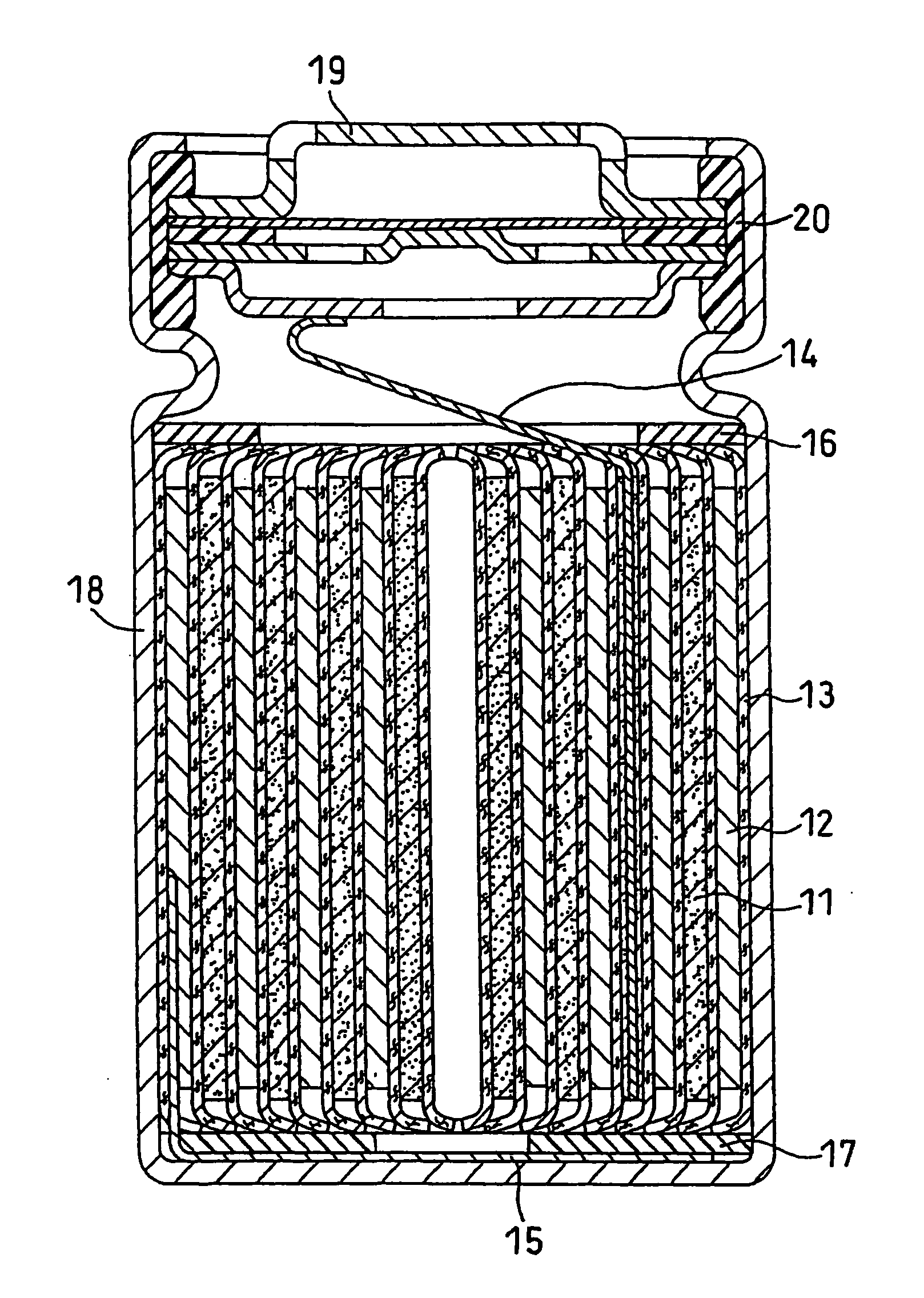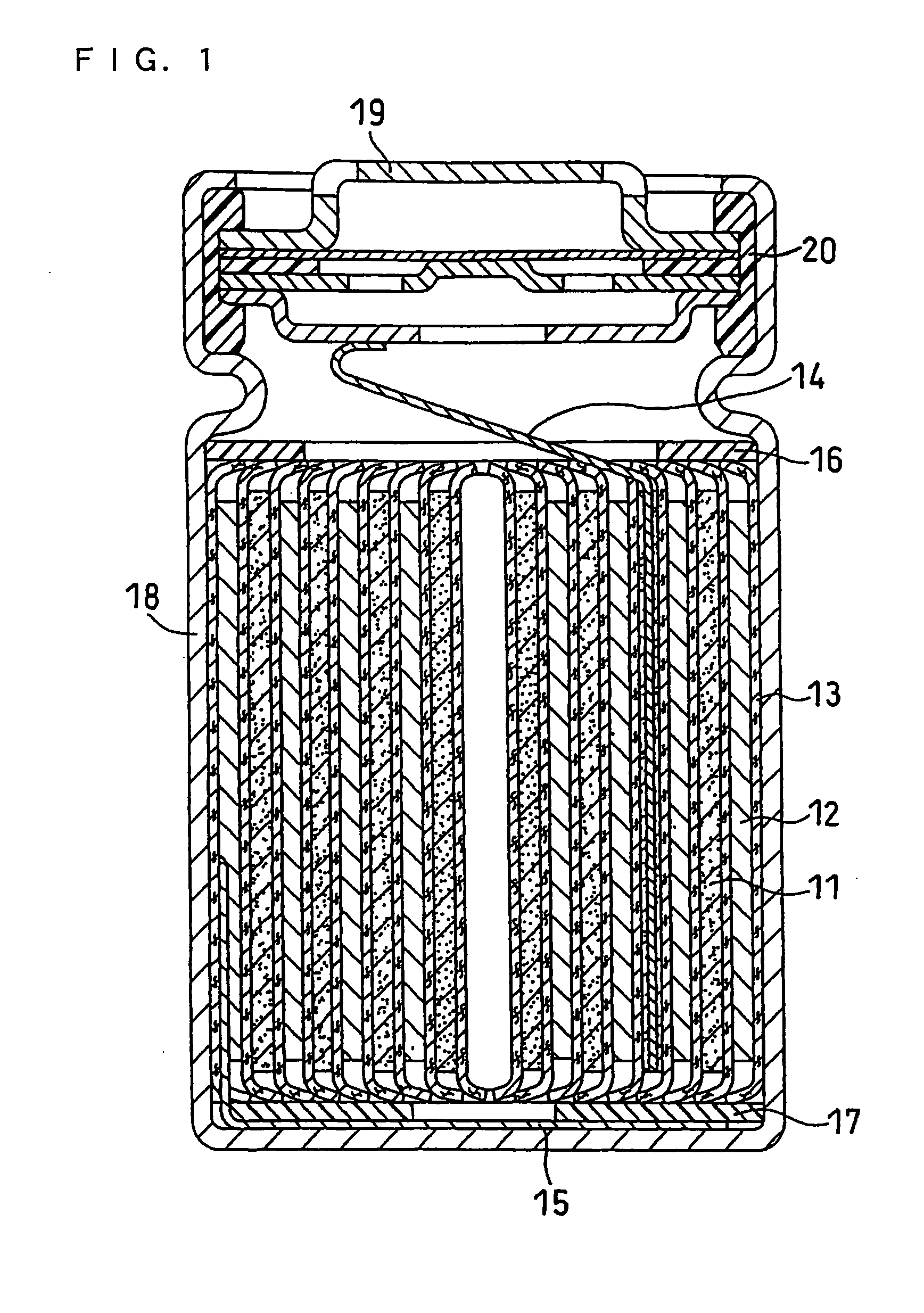Nonaqueous Electrolyte Secondary Battery
a secondary battery and non-aqueous electrolyte technology, applied in the direction of non-aqueous electrolyte accumulator electrodes, cell components, electrical apparatus, etc., can solve the problems of reducing the site that functions as a positive electrode active material, reducing the capacity, etc., and achieves favorable high temperature storage characteristics and improved safety.
- Summary
- Abstract
- Description
- Claims
- Application Information
AI Technical Summary
Benefits of technology
Problems solved by technology
Method used
Image
Examples
example 1
EXAMPLE 1-1
(a) Fabrication of a Positive Electrode
[0097]An aqueous solution including cobalt sulfate at a concentration of 0.999 mol / L and aluminum sulfate at a concentration of 0.001 mol / L was continuously supplied into a reaction bath. Sodium hydroxide was dropped into the reaction bath until the pH of the aqueous solution becomes 10 to 13, whereby Co0.999Al0.001(OH)2 was synthesized. Thereafter, the resultant hydroxide was sufficiently washed with water and then dried to give a precursor of a positive electrode active material.
[0098]The precursor thus obtained and lithium carbonate were mixed so that the molar ratio of the lithium, the cobalt and the aluminum became 1.02:0.999:0.001. The resultant mixture were pre-baked at 600° C. for 10 hours and then crushed. Subsequently, the crushed baked material was baked again at 900° C. for 10 hours and then crushed and classified to give a lithium-containing composite oxide represented by a formula Li1.02Co0.999Al0.001O2. The resultant ...
examples 1-2 to 1-4
[0120]Batteries were fabricated in the same manner as in Example 1-1 except that when synthesizing the precursor of the positive electrode active material, the concentration ratio of the cobalt sulfate to the aluminum sulfate was changed to 0.95:0.05, 0.80:0.20 or 0.75:0.25. The batteries thus obtained were referred to as batteries of Examples 1-2 to 1-4.
example 1-5
[0121]A battery was fabricated in the same manner as in Example 1-1 except that when the precursor of the positive electrode active material was synthesized, iron sulfate was further added and the concentration ratio of the cobalt sulfate, the iron sulfate and the aluminum sulfate was changed to 0.9:0.05:0.05. The battery thus fabricated was referred to as a battery of Example 1-5.
PUM
 Login to View More
Login to View More Abstract
Description
Claims
Application Information
 Login to View More
Login to View More - R&D
- Intellectual Property
- Life Sciences
- Materials
- Tech Scout
- Unparalleled Data Quality
- Higher Quality Content
- 60% Fewer Hallucinations
Browse by: Latest US Patents, China's latest patents, Technical Efficacy Thesaurus, Application Domain, Technology Topic, Popular Technical Reports.
© 2025 PatSnap. All rights reserved.Legal|Privacy policy|Modern Slavery Act Transparency Statement|Sitemap|About US| Contact US: help@patsnap.com


